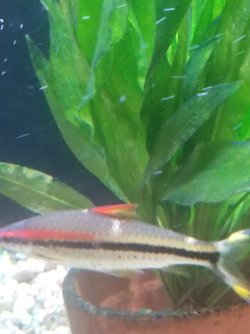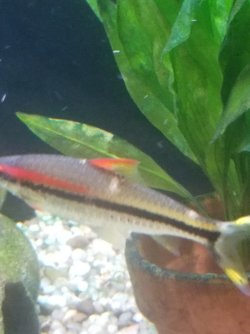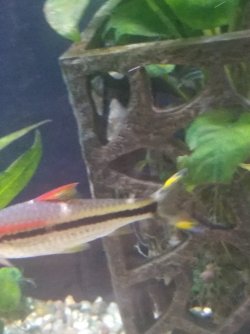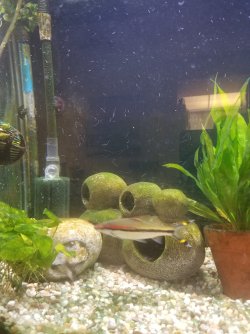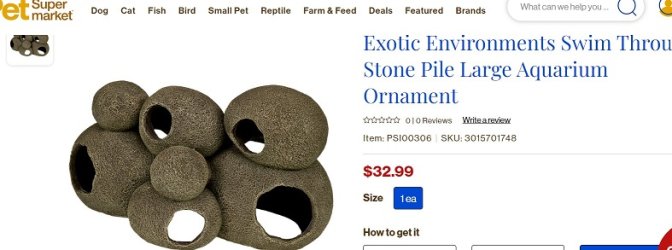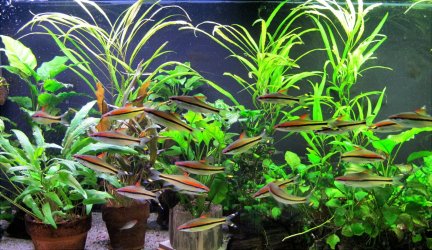The discus can handle salt, the corys may be unhappy with it and I really doubt the redlines will be good with it.
I cannot tell from the pics if the white is raised or flat. If flat, it might be columnaris.You do not show the fishes mouth in any of the pics. Do you see white lips or whats looks to be fungus in the mouth area? If so that makes it likely to be columnaris.
Also, the barbs would like cooler water and the discus warmer water and the corys are likely in the middle or closer to the barb temp.
https://www.seriouslyfish.com/species/sahyadria-denisonii/
I have gotten relines as imports a couple of times and had to treat for columnaris once. The fish were picked up right off the plane by the trans-shipper from whom I picked them up shortly after. They did Q below.
View attachment 346241
I have kept the red-lines for a number of years. I started with some in a 45 gal. Today they live in my 150 with clown loaches. The barbs appreciate some open swimming space and tend to move as a group, more or less. They also like to cruise in the plants.
If you can rule out columnaris, and it isn't fungus, which is normally fuzzy, then the next likely answer is injury, But if all the fish go through the ornament shouldn't more than one have a scrape or two. If you can confirm it is columnaris, then the treatment needed is an antibiotic. You may see columnaris called Flavobacterium columnaris or Flavobacterium columnare
.


